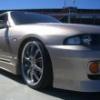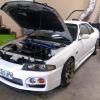R33 Manual Conversion Wiring Problems
Announcements
-
Similar Content
-
Latest Posts
-
So I actually had the cover off my car today, here is a (bad) pic of the setup. I have an oil cooler thermostat block, the temp sender is straight in there. The pressure sender has a short AN line to a T piece which is mounted (hopefully cable tied counts as mounted....) on the chassis. BTW every fitting you could ever imagine exists....just depends what they cost and how many you need. Raceworx AN adapters are here: https://raceworks.com.au/fittings/adapters/, I think you said you need BSPT to AN (https://raceworks.com.au/fittings/adapters/bsp/tapered/an-to-bspt-adapters/) and AN to NPT (https://raceworks.com.au/fittings/adapters/npt/) BTW, braided line is super simple to make. It looks intimidating, is not.
-
I'm actually not sure - I think it was "Stealth Performance" (It really is near impossible to find a FEMALE 1/8BSPT to 1/8NPT male at ALL) but having the thing leveraged on a 90 degree angle on a small aluminium fitting is not too smart. Also in not too smart, I've drilled out the center of the broken fitting so there's maybe 0.00001mm of thread to bite into, so yeah. I may have to get it drilled/tapped/plugged entirely. Given I could conceivably tap a thread/adapter/pressure line in any point in the oil system I suppose it's feasible to run a line to the Nissan Sensor to keep the dash working. Do these exist in AN fittings and the like? Like an AN fitting that has a NPT (or other?) thread as well for putting a sensor in?
-
I would agree. There will be an amount of boost you could run safely with an otherwise factory system, but it would be low enough to not be worth the cost. And if you are reliving your 20s, you know a 'little bit' was never enough. Personally, if I didn't want to spend the money, then stick with NA bolt-ons, and maybe a tune.
-







Recommended Posts
Create an account or sign in to comment
You need to be a member in order to leave a comment
Create an account
Sign up for a new account in our community. It's easy!
Register a new accountSign in
Already have an account? Sign in here.
Sign In Now